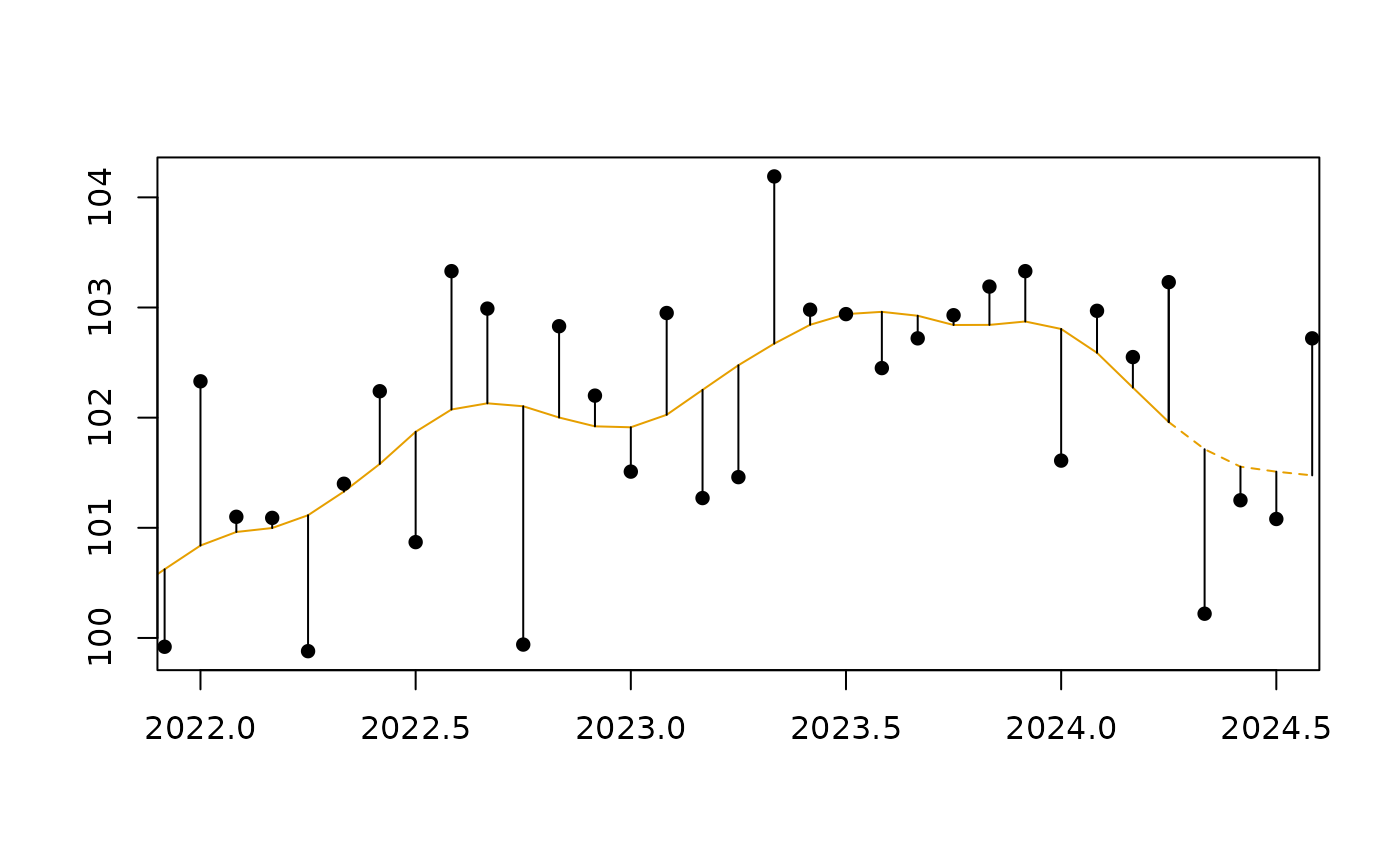Lollypop plot
Usage
lollypop(
object,
xlim = NULL,
ylim = NULL,
col_tc = "#E69F00",
col_sa = "black",
color_points = col_sa,
cex_points = 1,
pch_points = 16,
xlab = "",
ylab = "",
lty_last_tc = 2,
n_last_tc = 4,
...
)
gglollypop(
object,
xlim = NULL,
ylim = NULL,
col_tc = "#E69F00",
col_sa = "black",
color_points = col_sa,
cex_points = 1,
pch_points = 16,
legend_tc = "Trend-cycle",
legend_sa = "Seasonally adjusted",
lty_last_tc = 2,
n_last_tc = 4,
...
)Arguments
- object
"tc_estimates"object.- xlim, ylim
x and y limits of the plot. If
xlimis defined and notylim, thenylimis determined automatically.- col_sa, col_tc
color of the seasonally adjusted and trend-cycle components.
- color_points, cex_points
color and size of the points associated to the seasonnaly adjusted component.
- pch_points
point type of the seasonally adjusted component.
- xlab, ylab
x and y axis labels.
- lty_last_tc
line type of the last values of the trend-cycle component.
- n_last_tc
number of last values of the trend-cycle component to be plotted with a different line type (to emphasize that there is higher variability for the last estimates). If
NULL, thenn_last_tcis equal to the MCD statistic.- ...
other parameters.
- legend_tc, legend_sa
legend of the trend-cycle and seasonally adjusted components.
Examples
tc_mod <- henderson_smoothing(french_ipi[, "manufacturing"])
lollypop(tc_mod, xlim = c(2022, 2024.5))
